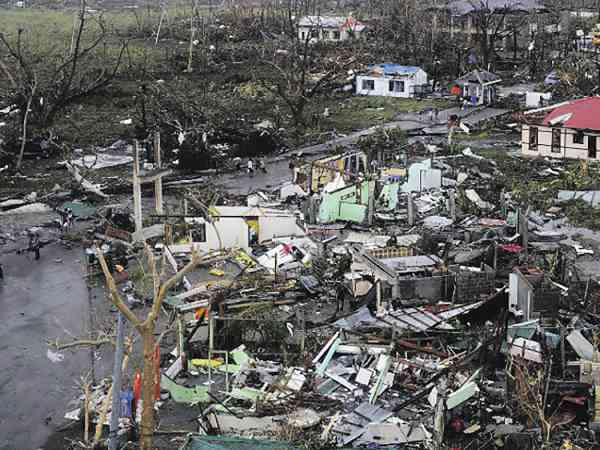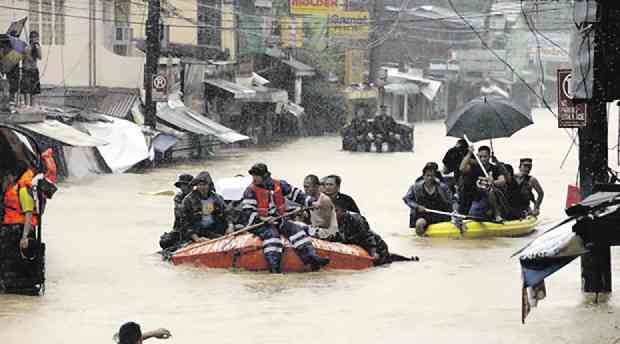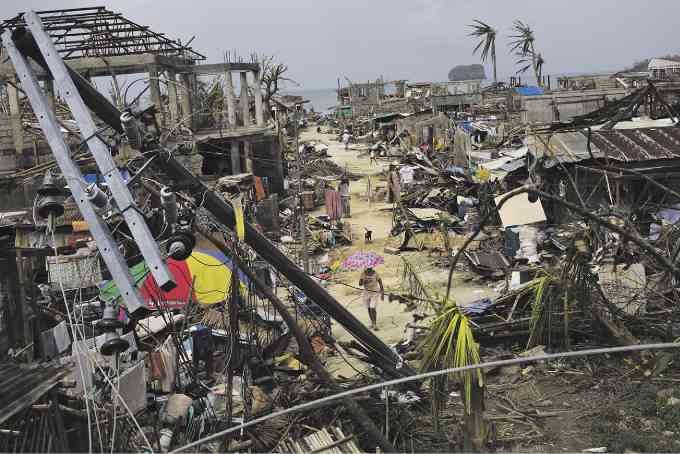Development of sustainable, resilient structures urged

Poor people lose a larger share of their assets and income as they live in buildings with low resistance tonatural hazards.
The need to climate-proof homes, buildings, and infrastructure in general has never been more apparent than today.
Nor has it been more urgent for governments to adopt modern land-use and urbanization plans to help safeguard the safety of their people.
Every year, the havoc wrought by extreme natural disasters has forced 26 million people into poverty and has resulted in $520 million in economic losses, according to the latest report released earlier this week by the World Bank and the Global Facility for Disaster Reduction and Recovery (GFDRR).
In the Philippines alone, for example, an estimated one million Filipinos slid into poverty after the 2013 Typhoon Yolanda (international name: Typhoon Haiyan) sapped $12.9 billion from the national economy and destroyed over a million homes.
And that’s just one typhoon.
“Severe climate shocks threaten to roll back decades of progress against poverty. Storms, floods, and droughts have dire human and economic consequences, with poor people often paying the heaviest price. Building resilience to disasters not only makes economic sense, it is a moral imperative,” World Bank Group president Jim Yong Kim said in a statement.
The new report, entitled “Unbreakable: Building the Resilience of the Poor in the Face of Natural Disasters,” showed that the combined human and economic impacts of extreme weather on poverty are far more devastating than previously understood.
It also assessed, for the first time, the benefits of resilience-building interventions in the 117 countries studied. Such interventions included early warning systems, improved access to personal banking, insurance policies, and social protection systems that could help people better respond to and recover from shocks.
Limited ability
The sad reality is that disaster losses disproportionately affect poor people, who have a limited ability to cope with them.
Poor people are typically more exposed to natural hazards, losing more as a share of their wealth and are often unable to draw on support from family, friends, financial systems, or governments. Add the fact that not all governments have the necessary climate-smart policies that better protect the most vulnerable.
And this is highly evident in terms of housing.
According to the report, households living in the slums or informal settlements constructed of wood, bamboo, and mud, and occupying steep slopes will suffer more damage from a natural disaster than the households whose homes are made of stone or brick. This only goes to show that, “housing vulnerability decreases with income.”
In the Philippines, this means that some 1.5 million informal settler families (ISFs), of which 584,000 are living in Metro Manila, are highly vulnerable to the possible damages wrought by natural disasters.
The report further showed that “poor people, with fewer resources, tend to invest less in preventing and mitigating the adverse effects of natural hazards and environmental changes. In China, Indonesia, the Philippines, Thailand, and Vietnam, wealthier households are more likely to invest in proactive ex ante adaptation measures.”
Building resilience
Efforts to build poor people’s resilience are already gaining ground, according to report. For example, two weeks after Cyclone Pam struck Vanuatu in 2015, the small island state received a $1.9 million cash injection by way of the Pacific Catastrophe Risk Insurance Program (PCRAFI), the first program of its kind in the South Pacific.
In the Philippines, following Typhoon Yolanda, the government increased grants and temporarily lifted the conditions on a cash transfer program to provide urgent humanitarian support to affected households.
On top of these measures, however, several policies can be implemented to reduce exposure to disasters. The option most often discussed to reduce losses from natural disasters was to ensure that people do not live where they could be affected by disasters such as floods or landslides, according to the report.
The WB and the GFDRR also cited the need for the governments’ land-use and urbanization plans to be risk-sensitive.
“Land-use regulations can help by ensuring that new development occurs in places that are safe or can be easily and cheaply protected. They can also avoid unchecked urban development that leaves too little porous green space, which further increases runoff and flood risk,” the report stated.
“Implementing risk-based land-use plans remains challenging, however. Countries need strong institutions that can ensure that land-use plans are actually enforced. In most of the world today, risk-sensitive land-use plans face strong political economy obstacles and are only rarely enforced,” it added.
One of the main obstacles, the report explained, was the asymmetry between the costs and benefits of risk-sensitive land use planning.
For instance, the costs of flood zoning are immediate, visible, and concentrated in the form of reduced land values for landowners and higher housing costs for tenants. By contrast, the “benefits are avoided losses—which nobody can see—some time in the future and for unknown people. In such a context, the opponents of flood zoning are usually vocal and well organized, whereas the beneficiaries are absent, making such policies difficult to pass and enforce.
Also needed are new and additional investments that will reduce the long-term vulnerability of the population. These are investments in new infrastructure designed to resist natural hazards, absorb climate change, and remain efficient in spite of changes in climatic and environmental conditions.
The report further pointed out that building norms and stronger infrastructure are critical. One reason, it said, that “poor people lose a larger share of their assets and income is that they live in buildings with low resistance to natural hazards.” And many factors influence building vulnerability.
“One factor is the lack of clear and effectively enforced land and property rights, which discourages poor households from making more robust and durable—but also costlier—investments in their homes. Facing the permanent risk of eviction, they are unlikely to invest in the physical resilience of their homes, such as retrofitting to strengthen homes against disasters,” the report explained.
“Another factor is the quality of construction and the role of building regulations. The world will see the construction of 1 billion new dwelling units by 2050. However, this growth may lead to a rapid increase in risk,” it added.
Local initiatives
In the Philippines, many local property developers have long been advocating for sustainable, green, and environment-friendly architecture. And this is evident in their thrust towards creating more resilient communities and townships.
Rockwell Land Corp. for instance, earlier commissioned a study for the 100-year flood cycle history of the land where all its developments sit, while Century Properties previously reported of putting in place a cluster-wide flood-prevention and mitigation system in one of its projects, and securing an extensive flood risk analysis for another development.
Ayala Land Inc., through its 19 estates, has also demonstrated how it remained a true steward of the environment, as it makes it a point to study the impacts of their projects on the environment, society, and economy.
ArthaLand Corp. meanwhile has the Arya Residences, which is currently regarded as the benchmark of green structures in the Philippines by the Philippine Green Building Council (PhilGBC), and is the first and only top-end development to be registered under the US Green Building Council’s Leadership in Energy and Environmental Design (LEED) program.


